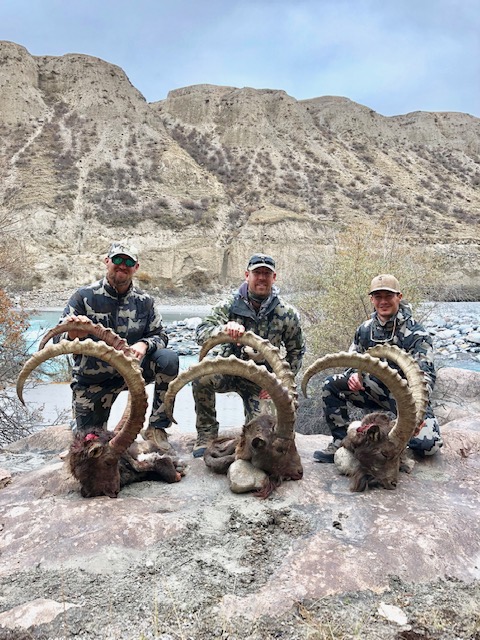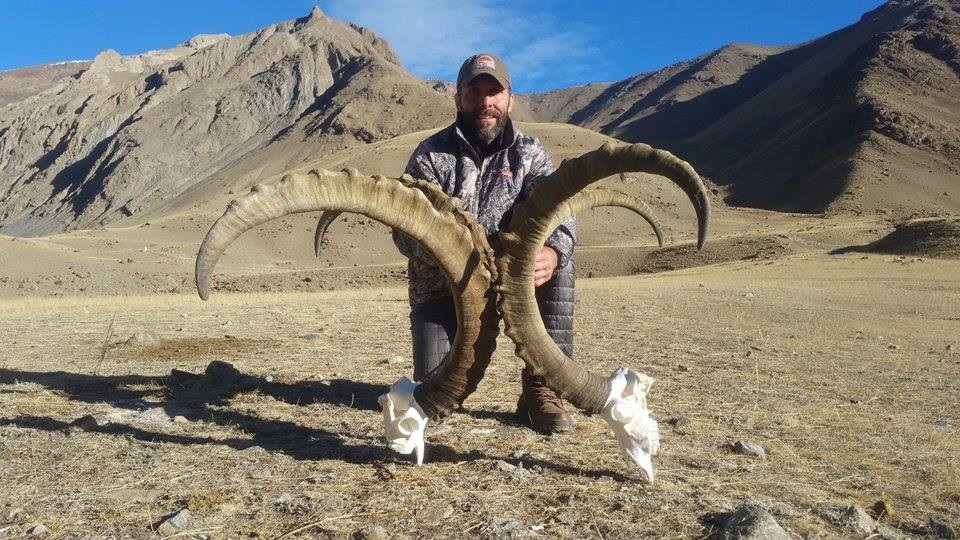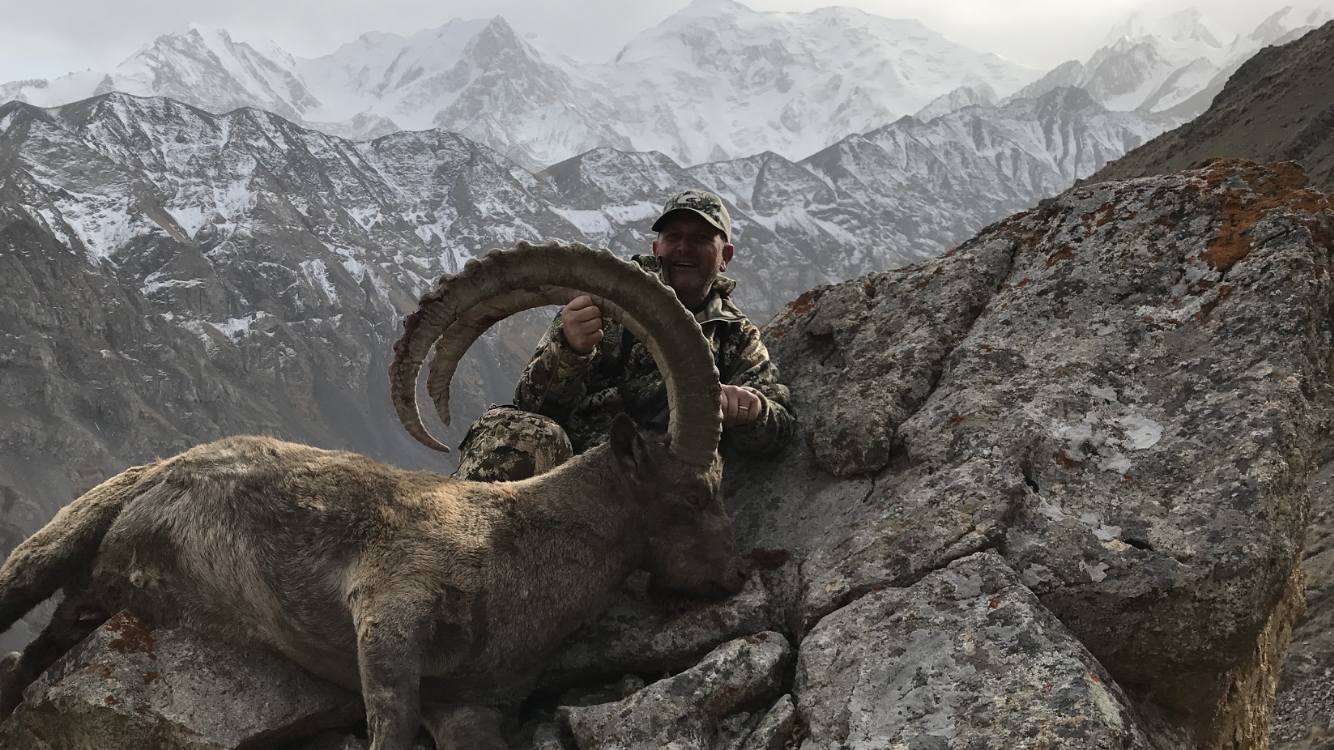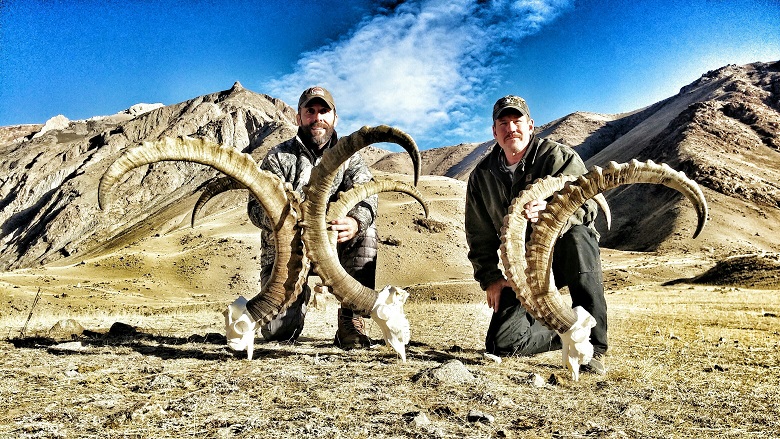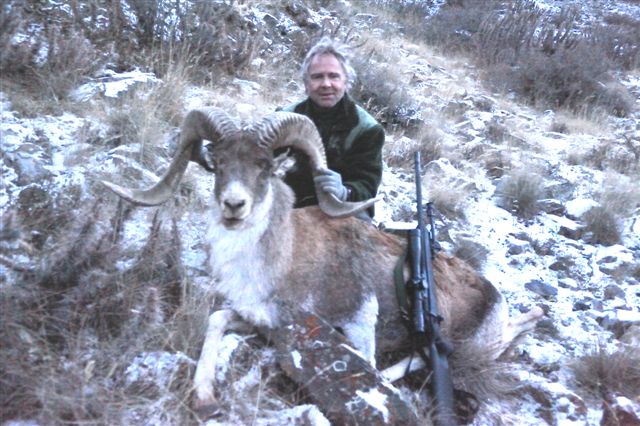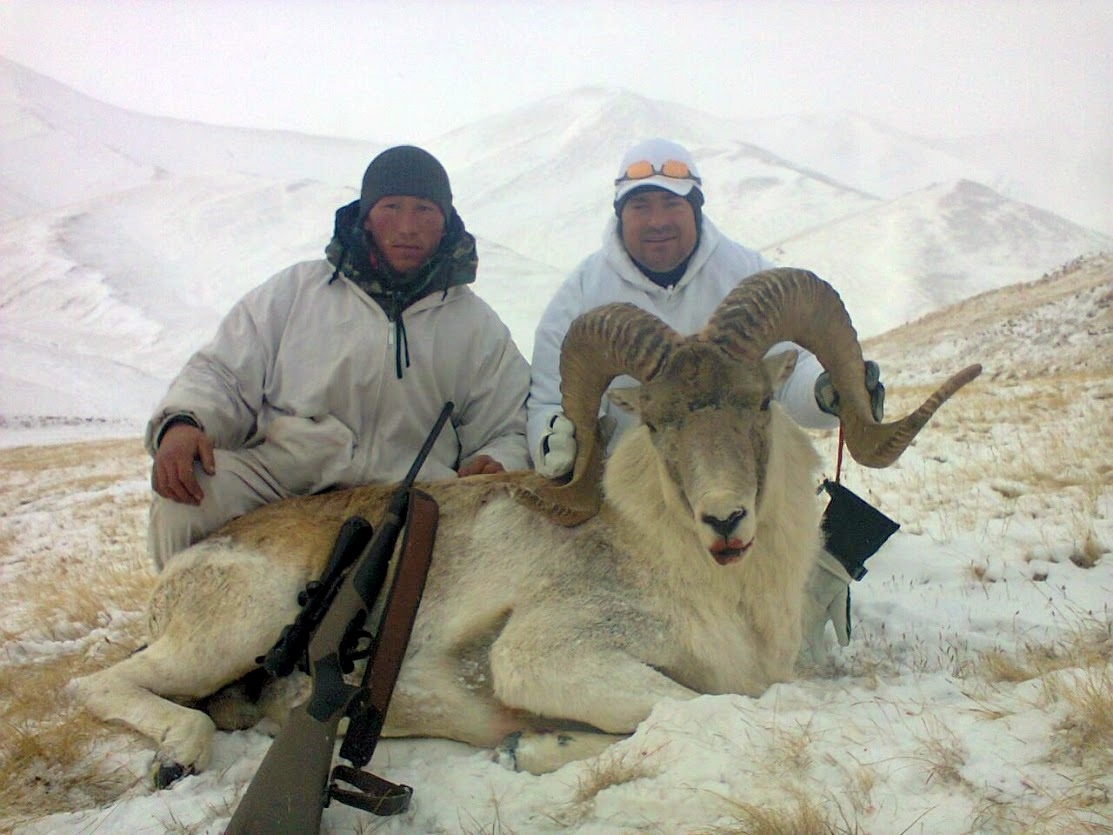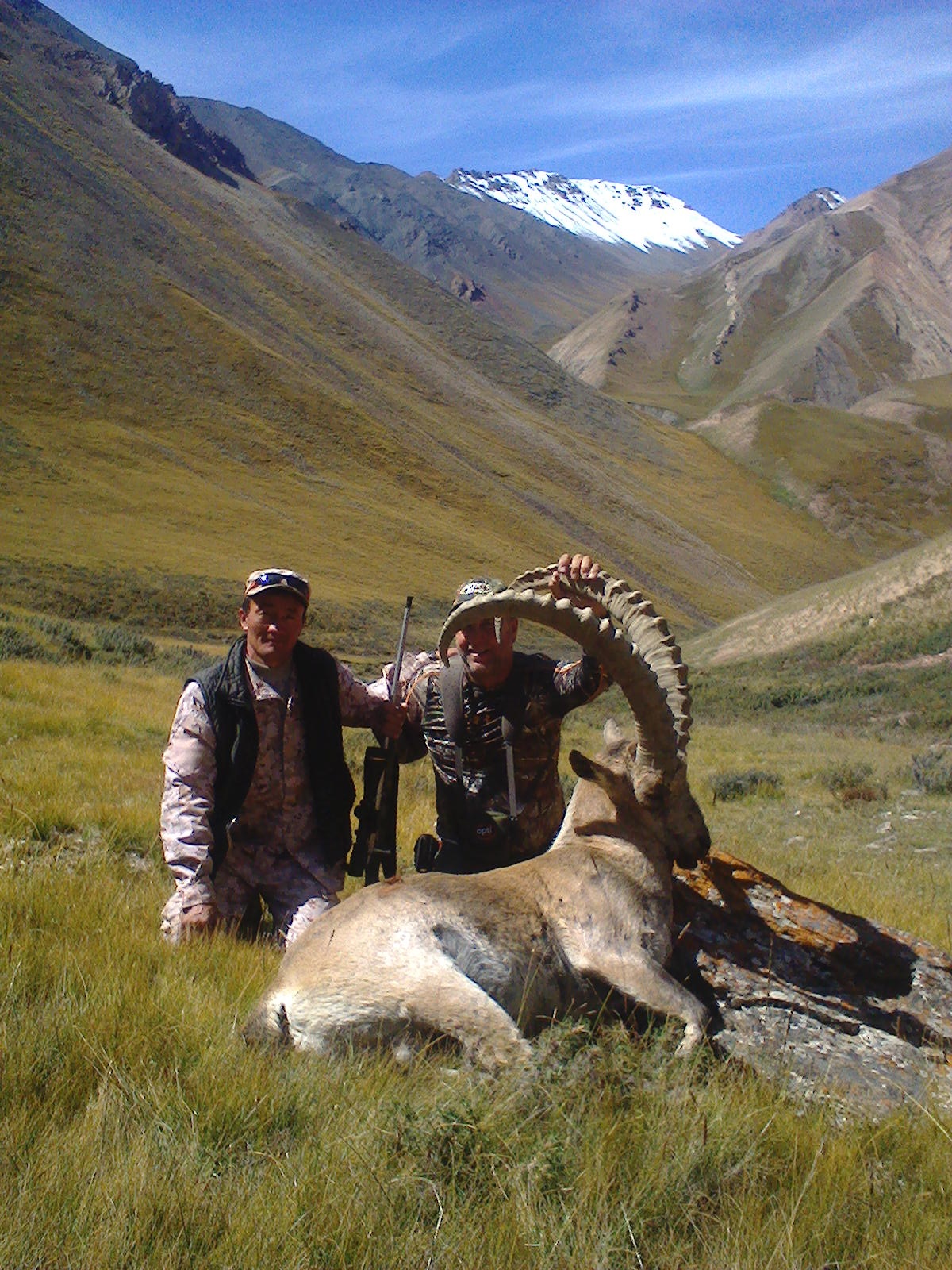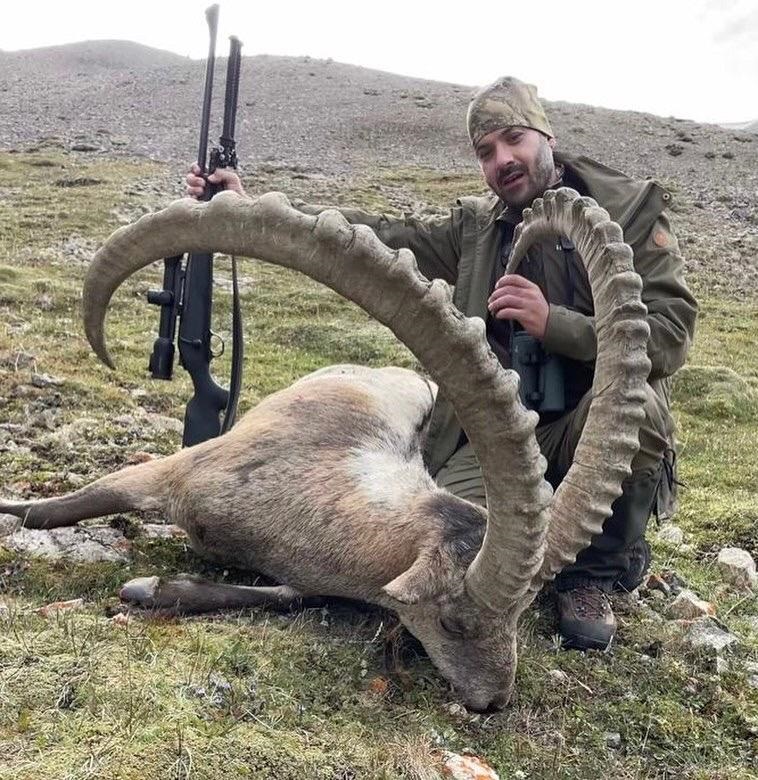Mid-Asian ibex hunting in Kyrgyzstan continues to offer what is arguably today’s best value in international mountain hunting and one of the most rewarding foreign adventures one can experience. Hunt Nation’s outfitting partner in this country is among the most professional we have found and remains committed to client success and satisfaction. They control an exclusive use guiding concession of more than 330,000 acres, an area previously closed to hunting for nearly 20 years. Additionally, they do not sub lease this concession to any other outfitters in Kyrgyzstan, and for that reason, there is zero outside hunting pressure. Since acquisition of this area in 2014 they have maintained a 99% success rate on all ibex hunts. For trophy hunters, ibex quality has been incredible with an average trophy of 45”- 46”, and trophies over 50” taken every season! In 2023, the largest ibex was an impressive 54” and success rates were once again 100%. A truly incredible statistic for any mountain hunt, especially when considering several of our past clients were over 70 at the time of the hunt. And on top of this, almost all of our clients get to take their trophies home as checked luggage! This alone will save the average person more than $2,000 with shipping, export and broker fees!
The Hunt
The hunt is conducted exclusively by horseback with two guides per each hunter (one on two) while in the field. Most guides speak little to no English. For that reason, it is especially important that each hunter communicates their expectations and/or limitations to the guides via the English-speaking outfitter or company director who will remain in base camp as the acting interpreter for the duration of the hunt. For example, if a client wants an ibex trophy of a particular size, if a client has a physical disability such as a bad knee or if a client has a predetermined maximum shooting distance, these limitations or personal goals must be discussed in camp while the opportunity to speak through a translator is present. While in the field the guides can speak to hunters only with simple words which has been sufficient for basic communication.
Base camp is heated and comfortable with multiple bedrooms, a sauna, a full time cook and an onsite taxidermist to prepare trophies for export. Do not expect to have a cell signal outside of the major cities however devices such as Garmin’s In-Reach are perfect for satellite texting and GPS in the world’s most remote locations.
The hunt itself requires extensive daily horseback riding. Each hunter along with their two guides will depart from base camp in different areas of the hunting territory so that no two hunters overlap and compete with one another. Rarely will clients return to basecamp until after success. Tented spike camps are used during the hunt itself with multiple lightweight backpacking-style tents utilized during warmer periods and larger 6-man tents with backpacking stoves used in cold weather periods.
The hunt is purely spot and stalk with shooting distances ranging, on average, from 200 to 400 yards. Longer distance shots are only advised for those capable and confident with their equipment as a wounded and lost game animal is considered a harvested trophy. Hunting with archery equipment is not currently legal in Kyrgyzstan. Expect altitudes from 8,500 to 11,000 feet for sheep hunts and from 10,000 to more than 13,000 feet when hunting ibex. Most hunters will not experience any significant symptoms of high altitude sickness unless spending prolonged periods of time over 14,000 feet. For those who may be more susceptible we recommend talking to your physician before departure about Diamox or other medications that may increase tolerance levels.
The horses in central Asia tend to be more stable and easier to ride yet also much smaller in size than their North American equine counterparts. The horses will do most of the heavy lifting to get clients into productive game areas however the final stalk is by foot and often involves a climb to get into a shooting position. We highly recommend that all clients arrive in the best possible physical condition to enjoy this experience to the full potential. The game numbers in the concession are extremely well-managed with success rates of 100% on all past ibex and sheep hunts. Most hunters will see mature trophies daily. Although no free ranging hunt for wild animals can be guaranteed we do feel confident that clients who arrive both mentally and physically prepared can expect opportunity on mature ibex and/or sheep trophies with most hunters needing no more than two to three days for success. Five (5) full days are included on a standard ibex hunt with six (6) full days of hunting including for sheep hunts. A second ibex may be taken so long as the additional license has been prepaid and secured in advance by the outfitter (nonrefundable). The trophy fee for the first and second ibex are only payable after the harvest of said trophies. Wolves in central Asia are abundant and may be taken for an additional trophy fee.
We recommend .30 caliber magnums as an ideal caliber for tough mountain game species like sheep and ibex. Only bolt-action rifles may be imported (no semi-automatic rifles). Rangefinders that calibrate true horizontal distance are especially important in steep mountainous country. Please refer to our equipment list for our full recommendations for this trip.
Season: late August to the end of November. Optimal time is late September through November.
Ibex Itinerary
Day 1 – USA/Canada departure
Day 2 – In -transit
Day 3 – Early morning arrival into Bishkek, customs clearance, and drive to camp expecting an evening arrival.
Day 4 through 8 – Five (5) full hunting days with two guides per hunter
Day 9 – Rest/relax in basecamp while trophies are prepared by onsite taxidermist for export
Day 10 – Return to Bishkek, overnight at hotel at client’s expense
Day 11 – Sightseeing around the city with a staff member while the outfitter prepares all necessary export papers including veterinary certificate and cites. Overnight at hotel. *This must be a business day for license processing
Day 12 -Morning departure from Bishkek arriving back in the USA/Canada in the evening on the same calendar day.
Travel
For hunters departing North America, Turkish Airlines via Istanbul (IST) remains the most reliable and convenient option while travelling with firearms. Turkish offers direct flights to Istanbul from numerous cities including Atlanta, JFK, Washington-Dulles, Chicago, Miami, Houston, San Francisco, Toronto and Los Angeles. Due to a dissolution of baggage agreements between airlines, most hunters will need to short check their baggage on their initial domestic flight and recheck their luggage/firearm directly with Turkish Airlines upon international check in. The process with firearms in quick and easy. That said, we do recommend all hunters give Turkish Airlines advanced noticed they are travelling with a firearm. The flights from North America to Istanbul are approximately nine to 13 hours depending on departure city. Upon arrival in Istanbul travelers need not leave the international airport and for that reason a Turkish VISA is not required for transit onto a connecting international flight. Expect a layover in Turkey from two to six hours, on average. Be sure to avoid particularly long or overnight layovers as you will not have a Turkish weapon permit. A direct flight, also on Turkish Airlines, from Istanbul to Bishkek (airport code FRU) is nearly five hours in duration with an early morning arrival into Kyrgyzstan’s capital city. Upon arrival into Bishkek’s Manas Airport, hunters will be welcomed on the tarmac by airport reception personnel and taken to the “VIP” section of the airport for passport control and weapon processing. This VIP fee is $100 each way, payable directly to the airport, and charged per person using the VIP section of the airport.
After departing the airport, the drive to camp is approximately 10 hours by 4wd vehicle, with the first 2/3 by paved road and the remaining 1/3 being dirt roads that degrade as you get closer to hunting camp. Without weather delays, clients can expect a late afternoon/early evening arrival into base camp.
Safety
People always ask, “is Kyrgyzstan safe?” At the time of this writing, Kyrgyzstan is listed as a Category 1 Travel Advisory by the US Department of State, the lowest and safest travel rating for any country in the world! Hunt Nation’s Derek Amadio has personally hunted this country multiple times since 2009 and has sent clients to this specific destination since 2015 without any issue. Additionally, clients are always with a member of the outfitter’s team and need not worry about any of their own hotels or ground transportation.
Entry Requirements
Currently, hunters from the United States must travel with a valid passport with a minimum of six-months validity beyond the trip dates. Entry visas may be obtained at the Manas airport in Bishkek upon arrival. At present time there are no vaccine requirements for entry into Kyrgyzstan.
Trophy Quality and Success Rates
The ibex hunting concession, located south of the city of Karakol near the Chinese border, is massive; over 330,000 acres of prime ibex hunting territory no other outfitters in the country may access. This region was previously closed to hunting for nearly 20 years before prior to the outfitter’s acquisition in 2014. Year-round game scouts protecting this region from local poaching paired with sound game management has produced an unbeatable success rate of 100% on mature ibex. Typical ibex trophies average 46” in length and more than ten years of age. Trophies over 50” are taken every season.
Marco Polo Argali (considered as Hume argali by SCI) are hunted in a second area south of the Naryn River in an area accepted for import by the USFW. The terrain in this area is typically not as high in altitude or as rugged when compared to the ibex area. Clients who can stay in the saddle all day will generally see rams daily with the ability to be selective in their harvest. Typical rams from this area measure from 46” to as large as 54” with a 48-52” average length and 16” bases.
Season
Historically, the season began in late August. Early season hunts from August into late September offer the most favorable weather conditions for travel, horseback riding and overall comfort. In 2024, we expect the government to postpone the start of the season to September 15th. Populations of ibex and sheep can be widely scattered during the first few weeks of the season and most animals carry a somewhat thinner transitioning summer coat with shorter hair. By early October ibex will have developed a thicker winter-quality coat as temperatures fall below freezing and snowfall becomes more frequent. Bachelor groups of billies often conjoin into larger groups by mid fall. It is not uncommon to see 50 or more ibex billies in one heard from October until the end of the season. November can be very pleasant with daytime temps in the mid-40s, and it can also be very cold with temperatures staying below freezing day and night. Snow accumulation can pose significant travel delays during this month and backpacking stoves are taken by the guides to help warm up food and equipment each night. November is not for the faint of heart but does offer the advantage of hunting the early rut. Although cold temperatures and snowfall may be unpleasant, animals can be spotted at great distances and easily tracked. Hunting is closed during the month of December and the winter seasons of January and February have been suspended.
Trophy Export
Ibex
One of the BIG advantages of choosing Kyrgyzstan for your Asian ibex and/or sheep hunt is the ability to import trophies as checked luggage for only the cost of an extra bag fee. Not only do your trophies arrive with you but the clearance process into the United States is generally a quick and easy process. Before departing Kyrgyzstan, skulls will be boiled, horns removed and cleaned and hides properly fleshed out and salted/dried. Following this process all hides and skull are then wrapped in plastic for easy transport in checked luggage. Heavy-duty duffle bags measuring 40” long will generally suffice for even the largest ibex and sheep trophies due to the curvature of the horns.
Upon arrival back in the USA all hunters will need to present a USFW 3-177 declaration of imported wildlife form that can be printed online here https://www.fws.gov/le/pdf/3177.pdf. The outfitter will provide you with your original hunting license, veterinary certificate and export cites from Kyrgyzstan. Please note that if a client is unable to pay for the trophy fee(s) in cash while in Kyrgyzstan the trophies must remain in Kyrgyzstan until the trophy fees are paid by bank wire. In such circumstances the trophies would later ship to client’s home country by third party at an additional cost to the client.
2024 PRICES (subject to change without notice until deposit received; all prices in USD)
Mid-Asian Ibex: $8,700 including one ibex of any size.
*Of this amount, $4,200 is paid in advance upon booking plus $4,500 to be paid in cash while in Kyrgyzstan. If no ibex is shot, $2,500 from the $8,700 hunt cost is refunded to the client.
A Second, Additional ibex: $5,700. Of this amount +/- $3,000 is non-refundable and must be prepaid in advance to buy second ibex tag. The remaining +/-$2,500 is paid as a trophy fee after the second ibex is shot.
Wolf including export cites: $2,000
Observer: $2,500
Included
Reception at Manas airport in Bishkek, all transportation during the hunt, guiding services with two guides per hunter, trophy preparation for export, firearm import permit, all applicable hunting licenses and Kyrgyz export permits, any-ibex with trophy fee.
Not Included
Bank wire transfer fee for initial hunt deposit, International flights to Bishkek, Kyrgyzstan (FRU), post-hunt meals and hotel accommodations in Bishkek, VIP airport lounge services for rifle and ammo processing @ $100 (required as of 2022 and payable directly to the Manas airport), trophy fees for any additional game taken, gratuities to guides and staff, trophy shipping (if requested), alcoholic beverages, any non-hunting companions.

